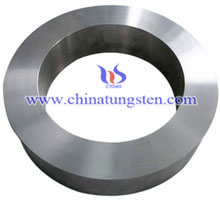TZM alloy susceptible to oxidation, even very little oxygen atoms in the molybdenum can be formed MoO2 and segregation at the grain boundaries by monolayer, thereby reducing the binding strength of molybdenum at grain boundaries, leading to TZM alloy intergranular brittle failure. In order to prevent the alloy oxidation or inhaled nitrogen and other impurities in the welding process, welding method is generally used TIG welding (TIG Promise).
TIG welding will produce arc to welding between the non-consumable electrode and the workpiece. During the welding process, the heating area tungsten electrode, furnace hearth, arc and TZM alloy will protect by gas protective layer to isolate the air. And the protective layer is formed by an inert gas provide full protection during welding.
During the test, the welding rod should use the same material of TZM alloy and the diameter of it is ≤3mm. On the other hand, before welding TZM alloy and welding bar should be washed 10% of nitric acid and hydrofluoric acid alcohol 3% for 1-3min, remove scale and stains. Then after cleaning put the alloy in the welding workbench and use DC to welding. The joint gap is 1mm.



